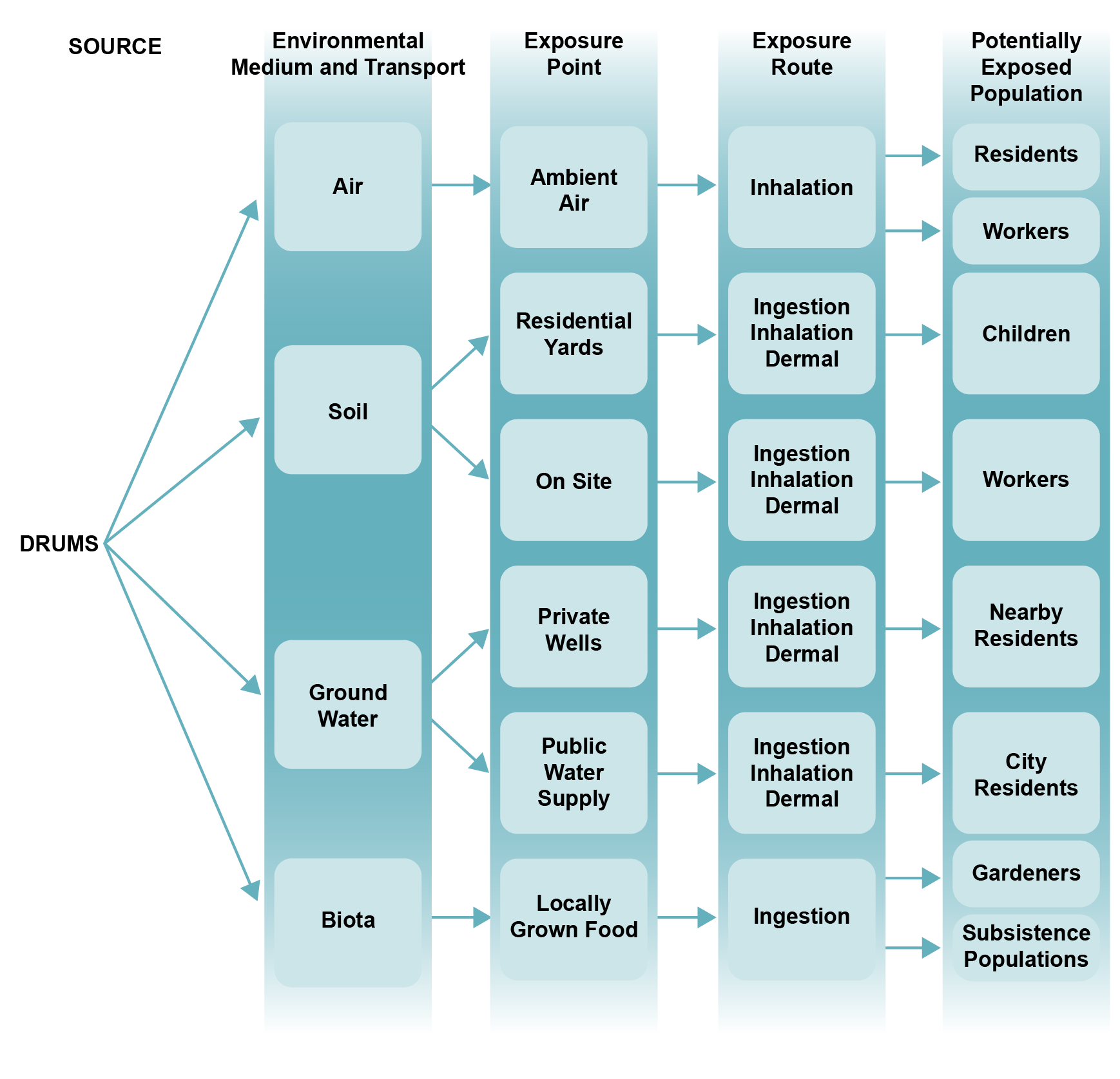Example of a Site Conceptual Model Diagram

This is an example of a site conceptual model diagram. It begins with oil drums as the source. The diagram uses arrows to show how the drums lead to four different environmental medium and transport categories – air, soil, groundwater, and biota – and then arrows to show how these categories relate to exposure points, exposure routes, and potentially exposed populations. Air leads to the exposure point of ambient air, exposure route of inhalation, and potentially exposed population of residents and workers. Soil leads to two exposure points: residential yards and on site. The residential yards exposure point leads to exposure routes of ingestion, inhalation, and dermal, and to the potentially exposed population of children. The on site exposure point leads to exposure routes of ingestion, inhalation, and dermal, and to the potentially exposed population of workers. Groundwater leads to two exposure points: private wells and public water supply. The private wells lead to exposure routes of ingestion, inhalation, and dermal, and to the potentially exposed population of nearby residents. The public water supply leads to exposure routes of ingestion, inhalation, and dermal, and to the potentially exposed population of city residents. Biota leads to the exposure point of locally grown food, exposure route of ingestion, and potentially exposed populations of gardeners and subsistence populations.